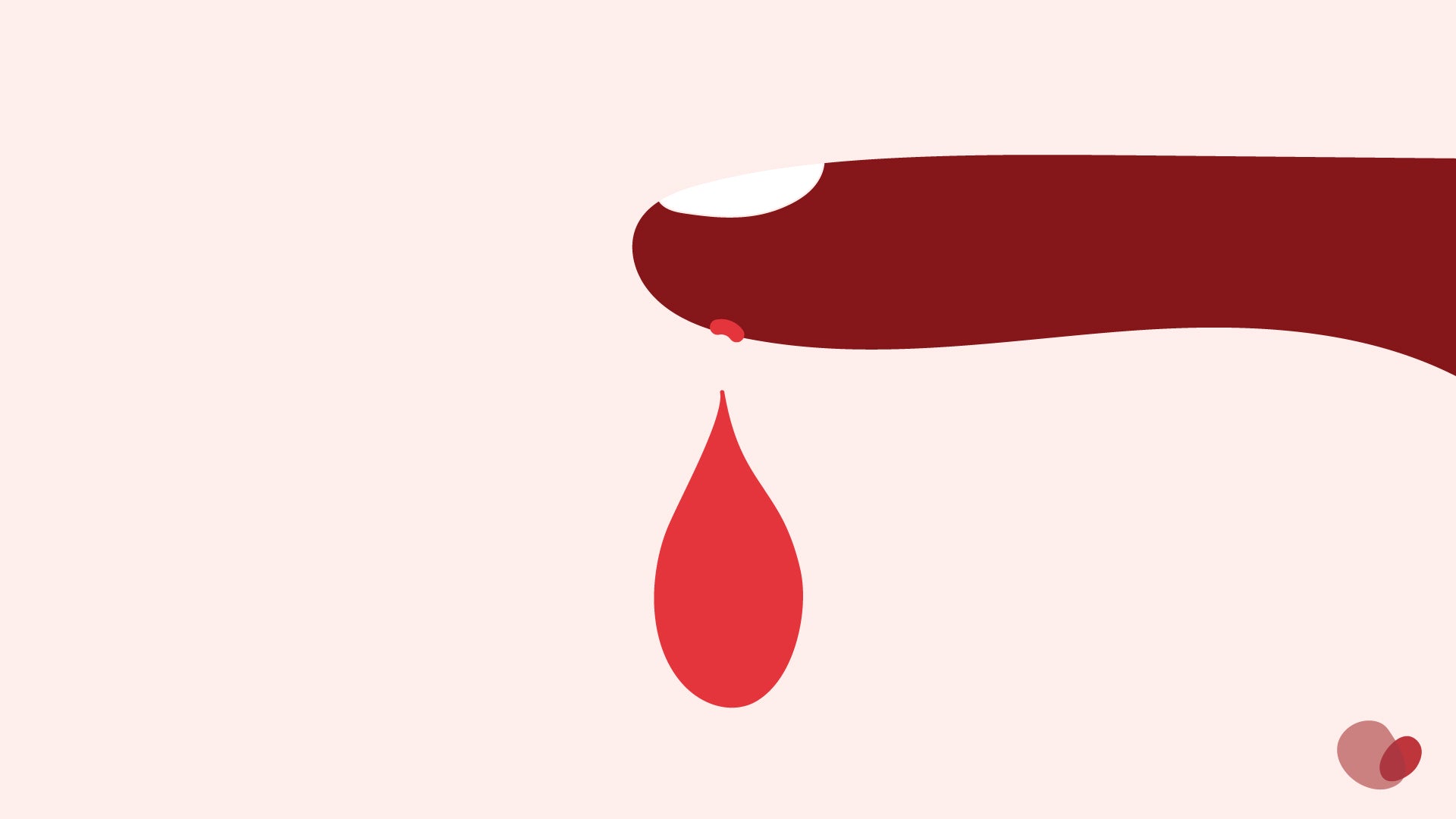Wet Vs Dried Blood Test: Differences, Benefits & Shelf Life

Dried blood tests can be just as reliable as wet blood tests, while being less painful, costly and troublesome. Learn how they work, their limitations, and how they can benefit you.
When it comes to blood tests, we commonly think of rubber bands, exposed veins, and glass vials quickly filling up with gushing blood. The blood drawn is then sent off to a laboratory where it is processed in preparation for analysis [1].
However, drawing and collecting blood isn’t the only way to procure a blood sample for testing. In many circumstances, a dried blood test can also be performed, and many might find this method preferable — especially those who are squeamish about needles [2].
Let’s take a closer look at wet vs dried blood tests, how they differ, and the potential benefits offered by each method.
At-a-glance: Wet blood test vs dried blood test [1, 3]
|
Wet blood samples |
Dried blood samples |
|
Requires a venipuncture to be performed |
Only needs a pin prick |
|
Larger volume of blood is collected |
Smaller volume of blood is collected, not exceeding a few drops |
|
Blood collection must be performed in a clinical setting or by a trained phlebotomist |
Blood sample may be collected by self at home |
|
Sample collected has shorter shelf life, improper handling risks wrong results |
Sample collected is shelf-stable, low risk of spoilage |
Understanding wet blood tests
In a wet blood test, blood is taken from the body, commonly through a vein at the crook of the elbow. This procedure is known as a venipuncture, and requires training and proper knowledge to be successfully performed [8].
If you’ve had your blood drawn in the past, you’d recall that a copious amount of blood was taken. This is because of the traditional practice of drawing 2 to 2.5 times the volume that a blood test requires [1]. As any unused blood is discarded, this also means there’s a good chance more blood is wasted than necessary.
After being drawn, wet blood samples will need to be tested within 8 hours, if kept at room temperature. Failing that, wet blood requires refrigerated storage, and beyond 7 days, will need to be frozen [1].
This means that there is a risk of inaccurate or spoilt test results if proper wet blood sample handling procedures are not observed. To add, collecting samples for a wet blood test is more labour intensive, and thus also more costly.
Understanding dried blood tests
In a dried blood test, blood is blotted onto sterile filter paper, and allowed to dry naturally at room temperature.
Only a few drops of blood are required, which are extracted by pricking a fingertip with a lancet [3]. This is comparatively less painful, and is likely to inspire less anxiety and fear than a venipuncture. Because it is also a lot less complicated, dried blood samples can be easily self-administered at home using a specialised kit.
Once dried, blood proteins remain stable — for up to several weeks [1]. This allows dried blood samples to be stored or transported under ambient conditions, without the need for specialised equipment or controlled environments.
Because dried blood samples are easier, quicker and more convenient to collect, producing them is less laborious and has a lower cost.
Efficacy of wet vs dried blood tests
At this point, you may be wondering if there is any difference in efficacy between wet and dried blood tests. Since one involves a whole vial of live cells, and the other, merely a few, dried-out drops, surely there must be a difference?
The short and clear answer is: no, there isn’t.
There have been several studies done which found that dried blood tests are just as accurate as wet blood tests, with comparable results found between the 2 methods [4]. Just like with wet blood samples, dried blood samples allow testing of various biological molecules such as nucleic acids, proteins, lipids, or small organic and non-organic molecules [5].
Given the benefits of dried blood tests (lesser blood required, ease of obtaining samples, shelf-stable for several weeks, etc), the method has gained traction in medical circles, notably among HIV prevention advocate groups [6].
However, it must be noted that dried blood tests do have certain limitations.
For one, they are unsuitable for whole-cell analysis, due to the changes in cell morphology when blood is dried [5]. Also, the low volume of blood collected in a dried blood test affects reproducibility, which rules this method out for certain analyses or procedures [5].
Should you choose wet or dried blood tests?
Wet blood tests and dried blood tests may be interchangeable, but both of these methods are clearly very different. Certainly, there are specific circumstances in which you may choose one over the other.
Reasons to choose a wet blood test
As mentioned earlier, some types of blood tests and analyses can only be performed with wet blood. If the test your doctor has ordered falls into this category, then you will have no choice but to go with a wet blood test.
Another reason to choose a wet blood test is to ensure there is no cross-containment. When collecting blood via a venipuncture, whole blood is transferred directly into a sterile vial, without exposure to airborne fungal spores or bacteria. Dried blood samples, on the other hand, may be exposed to non-sterile air, which may result in containment if not completely dried [5].
And finally, if your doctor or medical care facility does not have a policy of accepting dried blood samples, then wet blood tests will be your only option.
Reasons to choose a dried blood test
From the point of view of a patient, one of the most compelling reasons to choose a dried blood test is so you can avoid the pain and anxiety of having a needle stuck in your arm to draw blood. In comparison, just having a pinprick and shedding a few drops of blood is far preferable for those who fear the needle (and who doesn’t?).
Dried blood samples can also be easily taken at home, and once properly dried and sealed, is stable enough to even be mailed to your doctor. As such, dried blood tests are ideal for those who rather not deal with the hassle of making a doctor’s visit.
If you require blood tests frequently, dried blood tests may be the more feasible option. You can save on time and effort, experience less pain and have fewer punctures in your vein, which can lead to bruises. Additionally, dried blood tests can help families reduce costs.
In a study of kidney disease and cancer patients requiring therapeutic drug monitoring, switching to home-administered dried blood tests resulted in reductions of 61% and 43% respectively in overall societal costs. The reduction was driven mainly by lessened clinical visits [7].
Conclusion: Ask your doctor which one is better for you
Given that dried blood tests offer many benefits over conventional wet blood tests, there’s no harm asking your doctor about them.
Once your healthcare provider learns of your preference, you may be offered dried blood tests when appropriate to diagnose your health with less pain, anxiety and hassle. On the other hand, remember that certain tests can only be performed with wet blood, and dried blood tests would be ruled out.
At the end of the day, you should check with your doctor whether a dried or wet blood test is better for you.
Want a clearer picture of what’s going on with your hormones, but aren’t quite ready to make a trip to the doctor’s office? Our Hormone Test (S$299.50) can help. Simply order online and our phlebotomist will meet you at your home, office or other preferred location to collect your blood and bring it to a lab without undue delay.
We test for 5 fertility hormones, including prolactin and free thyroxine, and provide clear and easy-to-understand results in just a few days!


